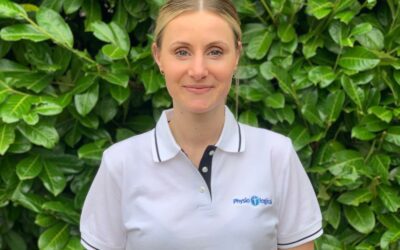Achilles Tendinopathy – self help exercises
What is Tendinopathy?
If the load we put on a tendon is too much and we continue to do this frequently then the amount of tissue breakdown starts to exceed the growth of new tissue. The structure of the tendon then starts to change and becomes less efficient at dealing with load. It is now believed this is the cause of pain rather than inflammation hence why now it is called tendinopathy not tendonitis.
There are two main stages:
Reactive Stage – the tendon will be painful and may swell in response to a sudden increase in load/change in footwear.
Degenerate (Chronic) Stage – the tendon maybe thickened and you may feel nodules within the tendon. The tendon can progressively deteriorate until it can’t handle any load, this puts it at higher risk of rupturing.
The achilles tendon is the thick band of tissue that connects the calf muscle to the heel bone. The achilles tendon lifts the heel off the ground during walking and running. It is one of the strongest tendons in the body.
Symptoms
- Pain is normally worse first thing in the morning and after sitting for long periods of time.
- It usually effect’s those who take part in sporting activities such as running.
- The tendon is normally painful if you squeeze it.
The best treatment for achilles tendinopathy is load management, activity modification, hands on physiotherapy including massage, frictions, ultrasound, kinesiology taping, acupuncture, stretches and eccentric calf raise exercises (see below).
Please be aware of your body and take advice from your GP before exercising if you have any aches or pains or send us an email (enquiries@physio-logical.net) for advice and guidance.
Treatment for a reactive mid achilles tendinopathy:
- Load management
– only continue to play netball if it is pain free to play and pain free the next day (tendons make take 24 hours to respond to load). If it is painful to play netball then it is best to rest for a few days until you can play pain free
– avoid tight shoes that cause direct tendon compression
– wearing shoes with a heel may help to reduce load on the tendon
– using a heel raise within your shoe may also help reduce achilles load as a short term measure
- NSAIDS / Anti-inflammatory medication such as ibuprofen – please speak to your doctor or pharmacist first prior to taking any medication – this can help to reduce swelling
- Ice – to reduce pain – 15 minutes x 2-3 times per day, protect your skin from ice burns by wrapping the ice in a towel
- Kinesiology taping to offload the tendon
- Massage the calf muscle to reduce tightness
- Isometric calf exercises (heel raises) – tendon pain is likely to effect muscle function, using isometric exercises to reduce pain and maintain strength can be very beneficial
- Ultrasound
Calf Raises:
Treatment for a degenerative achilles tendinopathy:
If you have had a niggling tendon for some time with periods of painful flare ups it is likely you have a more degenerate tendinopathy. Your achilles maybe thickened.
You still may get flare ups similar to reactive stage above, during flare up please settle symptoms first (see above).
- Load management – only continue to run if it is pain free to run and pain free the next day (tendons make take 24 hours to respond to load). If it is painful to run then it is best to rest for a few days until you can run pain free.
- Eccentric calf exercises (mid tendinopathy only – effects the mid portion of the achilles typically 2-7cm above the calcaneus – heel bone, not insertional tendinopathy) will improve your tendon’s ability to handle load.
Strengthening
Once the pain has settled it is time to improve the load capacity of the muscle and tendon by improving calf strength.
Normally you should be able to manage 10-15 single leg calf raises with minimal increase in your pain before you progress to this level.
The calf complex is composed of 2 main muscles – gastrocnemius and soleus – both need to be strengthened.
The most simple way of achieving this is by doing calf raises on the edge of a step (for mid tendon). If you are getting problems with pain around the bottom of the tendon (insertional) then do these exercises on the floor not on a step.
Eccentric Calf Raises:
Or
Heavy Slow Resistance:
 |
|
Single Leg Balance
 |
|
Energy storage exercises
- Start these exercises when you have minimal or markedly reduced morning stiffness in the achilles tendon on waking.
- Very mild tenderness on palpation of the achilles tendon.
- Have been tolerating some running without a flare in tendon irritability and symptoms.
Double Leg (DL)
Single Leg (SL)
Are you a netball player? Have you been suffering from a niggling achilles tendon? Physio, sports therapy and sports massage therapy can all help. Please get in contact with us via enquiries@physio-logical.net, 07835 712306 or book online as we can help you to get rid of that ongoing niggling achilles tendon pain.
Please also see our YouTube channel where we demonstrate some of these exercises, please share and subscribe to our channel as we are always adding new videos for different injuries.








